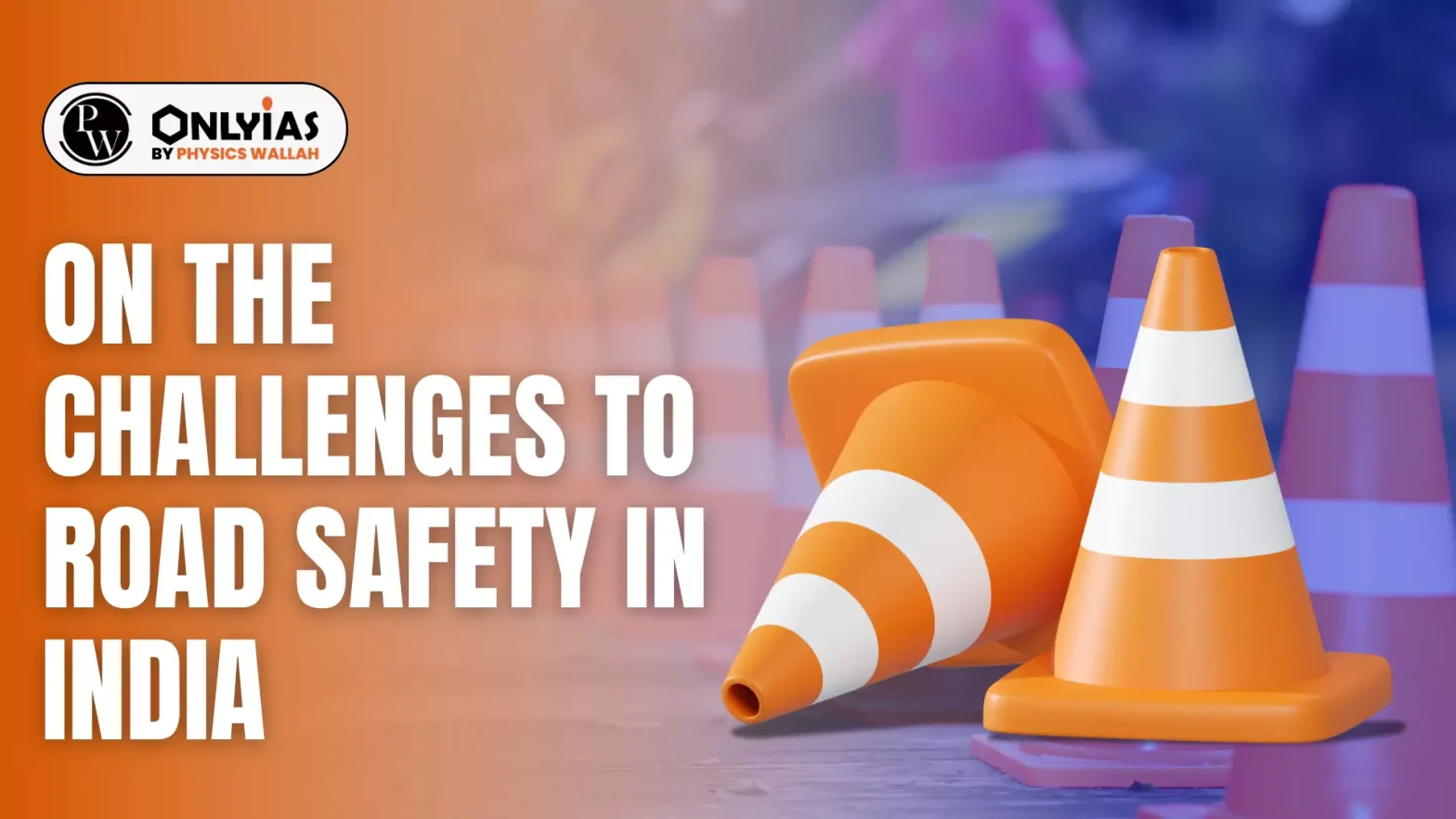The “India Status Report on Road Safety 2024,” prepared by the TRIP Centre at IIT Delhi, highlights the significant challenges India faces in improving road safety. The United Nations Decade of Action for Road Safety sets an ambitious goal to cut global traffic fatalities by 50% by 2030. India, however, is currently lagging behind and risks missing this crucial target if significant improvements are not made.
Key Findings from the India Status Report on Road Safety 2024
- Disparities in Death Rates Across States: The report uncovers wide variations in road accident death rates among Indian states.
- For instance, Tamil Nadu, Telangana, and Chhattisgarh have the highest rates, with 21.9, 19.2, and 17.6 deaths per 100,000 people, respectively.
- Conversely, West Bengal and Bihar report the lowest rates, at 5.9 per 100,000 people. These differences may be influenced by variations in vehicle density and infrastructure quality.
- Most Vulnerable Road Users: Pedestrians, cyclists, and two-wheeler riders are identified as the most at risk in road accidents.
- Truck-Related Accidents: Trucks are implicated in a disproportionate number of accidents, highlighting the need for enhanced safety protocols.
- Helmet Usage: Despite the well-documented benefits of helmet use in preventing fatalities and serious injuries, only seven states have achieved more than 50% compliance among motorised two-wheeler riders.
- Inadequate Safety Measures: Many states fall short in implementing essential safety measures, such as effective traffic regulation, road markings, and clear signage, which are critical for reducing accidents and improving road safety.
- Highway Audits and Maintenance: Though state and national roads and highways conditions are generally better than rural roads, there is a lack of regular auditing for both. Comprehensive and routine auditing is crucial to ensure ongoing road safety and infrastructure quality.
- Conditions on Rural Roads: Village roads often suffer from poor conditions, insufficient helmet use, and inadequate trauma care facilities, exacerbating the risks for road users in these areas.
- Concentration of Fatalities: Alarmingly, six states account for nearly half of all traffic fatalities in India, indicating a concentrated need for improved safety interventions in these high-risk regions.
Enroll now for UPSC Online Course
Global Comparison:
- In 1990, an Indian was 40% more likely to die in a road accident compared to individuals in developed countries. By 2021, this disparity had increased to 600%, highlighting a dramatic increase in road fatalities and a growing gap in road safety standards.
Economic Impact:
- The economic repercussions of road accidents are profound. The death of an earning member can plunge a family into poverty, especially if they lack significant savings.
- Additionally, the high healthcare costs associated with road accidents further strain financial resources.
- It is estimated that road accidents result in an annual economic loss of 3-5% of GDP.
The value of human life is immeasurable, and the loss of individuals not only impacts families but also has broader economic consequences. |
Major Causes of Road Accidents
- Speeding and Reckless Driving: Excessive speeding greatly heightens the risk of accidents. Adhering to safe speeds improves reaction times and overall safety, particularly when other drivers are behaving recklessly.
- Drunk Driving: Driving under the influence impairs judgement and coordination, leading to a higher likelihood of accidents.
- Not Following Traffic Rules: Disregard for traffic regulations contributes to dangerous driving conditions and increased accident rates.
- Poor Road Conditions and Infrastructure: Inadequate road maintenance and infrastructure issues can lead to hazardous driving conditions.
- Overloading of Vehicles: Exceeding vehicle capacity affects stability and handling, increasing the risk of accidents.
Recommendations for Improvement
- Create a National Database for Fatal Crashes: Establishing a comprehensive database will provide valuable insights into accident patterns and help identify areas for intervention.
- Tailored Strategies: The report emphasises the need for customised approaches to address the distinct road safety challenges faced by different states. This includes improving helmet usage, particularly in rural areas where compliance is low, and enhancing trauma care facilities to provide better support for accident victims.Implementing these targeted strategies is crucial for effectively reducing road fatalities and improving overall road safety.
- Focus on Pedestrian Safety: Implement targeted measures to protect pedestrians, including better crosswalks and pedestrian-friendly infrastructure.
- Improve Road Infrastructure: Enhance road safety by ensuring proper signage, well-maintained footpaths, and effective enforcement of traffic rules.
- Enhance Trauma Care and Emergency Services: Strengthen trauma care facilities and emergency response services to improve survival rates during the critical golden hour after an accident.
- Strictly Enforce Traffic Rules: Implement and enforce stringent penalties for traffic violations, such as using cameras to issue fines for speeding and other violations. This can serve as a deterrent and encourage compliance.
- Promote Public Awareness: Increase public awareness and responsibility regarding road safety. Community engagement and education can play a crucial role in reducing accidents and saving lives.
Check Out UPSC CSE Books From PW Store
Conclusion
The goal of the United Nations Decade of Action for Road Safety—to reduce traffic deaths by 50% by 2030—is achievable with the implementation of targeted strategies and comprehensive road safety measures. By deploying effective interventions, raising public awareness, and enhancing infrastructure, significant progress can be made towards improving road safety and reducing fatalities.
![]() 11 Sep 2024
11 Sep 2024

